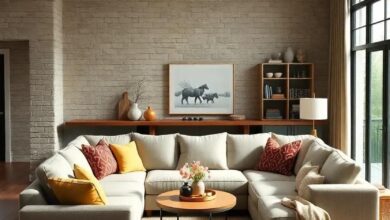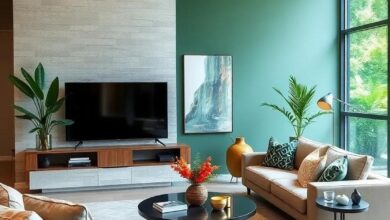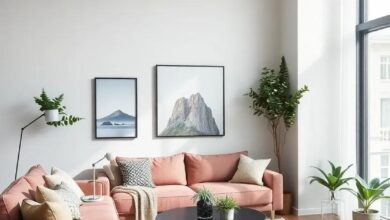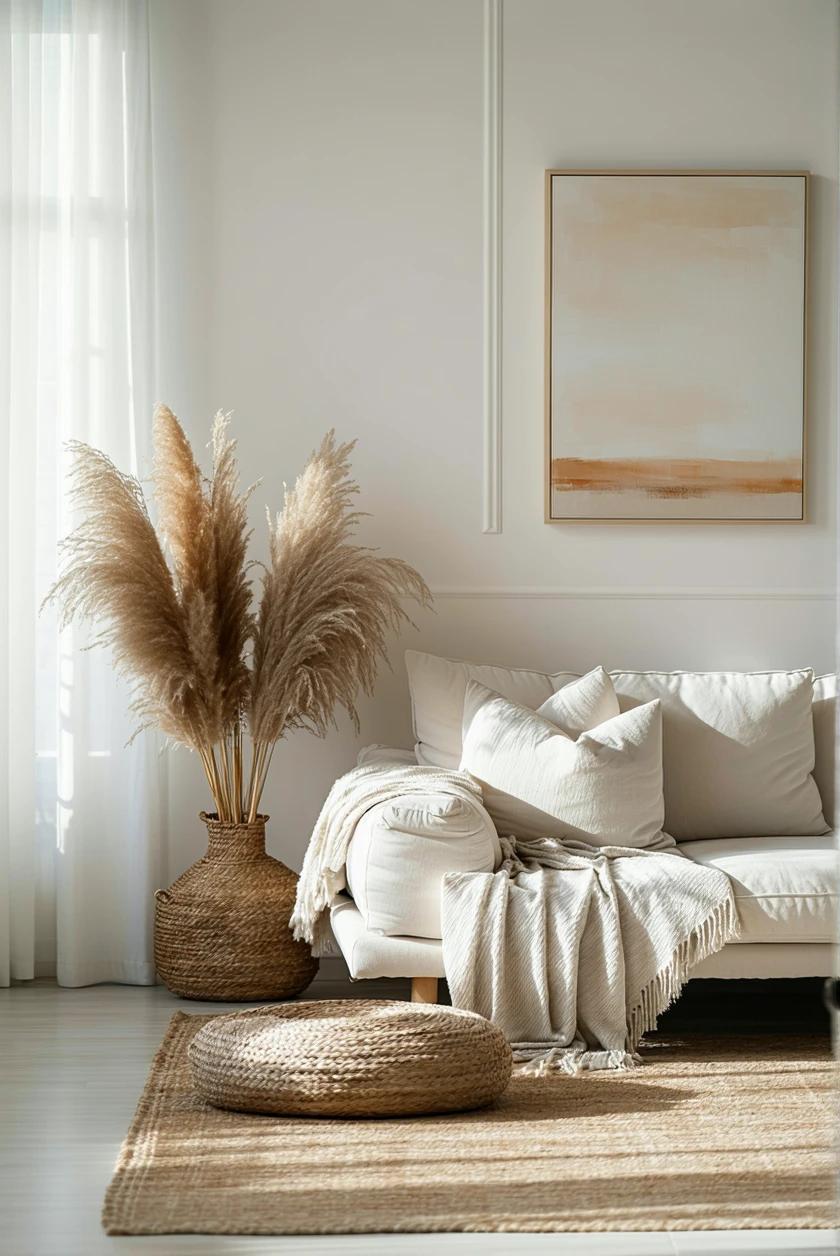
Transforming Small Spaces: Embracing Serenity with Soft Color Schemes in Living Rooms
In an era where hustle and bustle often dominate our daily lives, transforming our living spaces into serene sanctuaries has never been more essential. For those navigating the challenges of small living environments, the right color scheme can play a pivotal role in creating an atmosphere of calm and comfort. This article delves into the art of embracing soft color palettes in living rooms, exploring how gentle hues can enhance spatial perceptions, foster tranquility, and infuse your home with a sense of peacefulness. Whether you’re working with a cozy apartment or a snug corner of a larger home,discover how thoughtful color choices can turn even the most compact spaces into inviting retreats that resonate with serenity and style.
Embracing Calmness with Soft Blues in Cozy Living Rooms
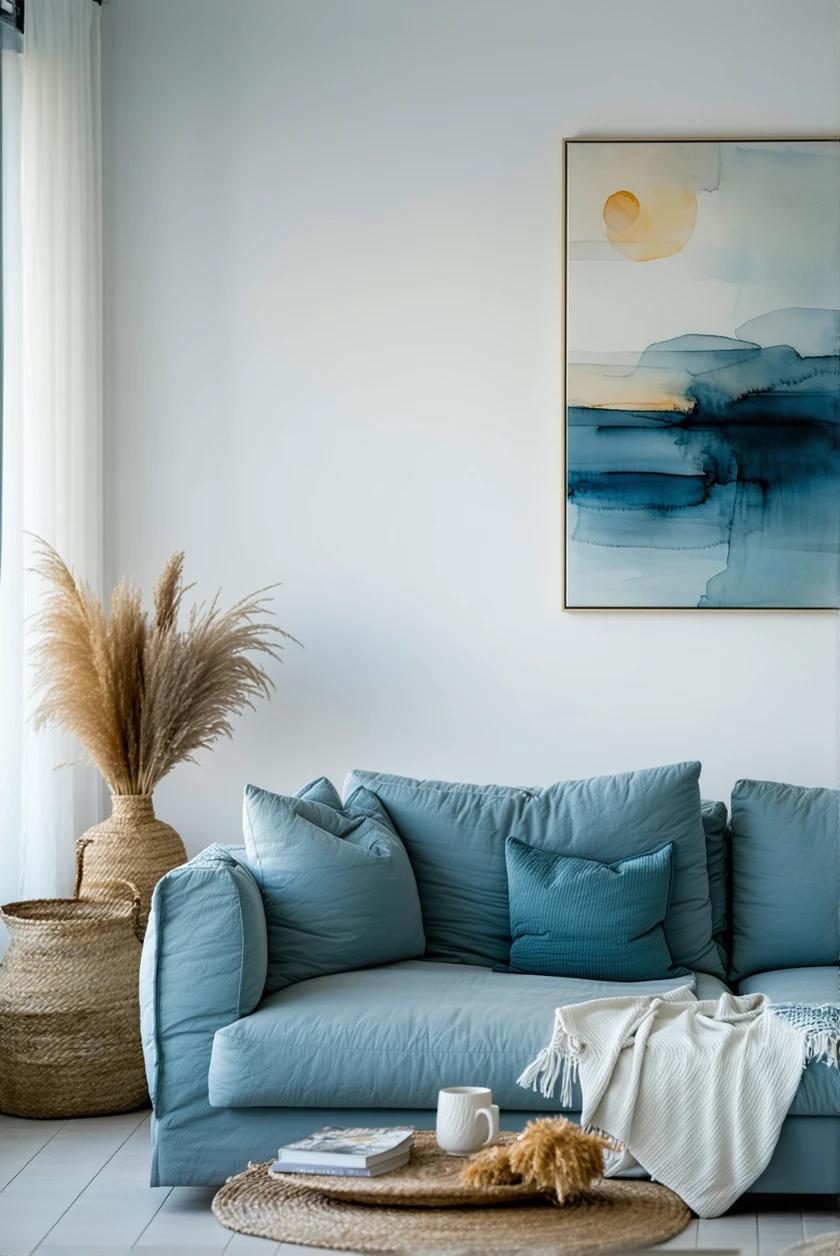
In the heart of a cozy living room, the allure of soft blue hues can create an inviting atmosphere that promotes serenity and tranquility. These gentle shades work beautifully with natural light, casting a calming glow that transforms even the tightest of spaces into a peaceful retreat. When paired with warm textures like plush throws or a soft area rug, the overall effect is delightful—evoking a sense of ease and relaxation. Consider incorporating decor elements such as:
- Soft blue cushions on a neutral sofa for a subtle pop of color.
- Pale blue wall art that reflects the color palette throughout the room.
- Light blue curtains that gently diffuse sunlight while adding elegance.
The key to achieving a serene ambiance lies in balancing these soft shades with complementary elements that ground the space. Light woods and natural materials can enhance the airy feel, while pops of greenery—be it a couple of strategically placed plants or a fresh floral arrangement—add life without overwhelming the senses. A color palette inspired by the sea can effortlessly bring a vacation vibe indoors, by incorporating:
| Element | color Shade | Effect |
| Accent Chair | Sky Blue | Inviting Comfort |
| Wall Color | Powder Blue | Enhances Space |
| Decorative Throws | Teal | Relaxing Depth |
By weaving these elements together, you cultivate an surroundings that ushers in calmness and invites you to unwind. For more insights into designing peaceful spaces, visit House Lovely.
The Tranquility of Cream and Beige: A Perfect Palette for Small Spaces
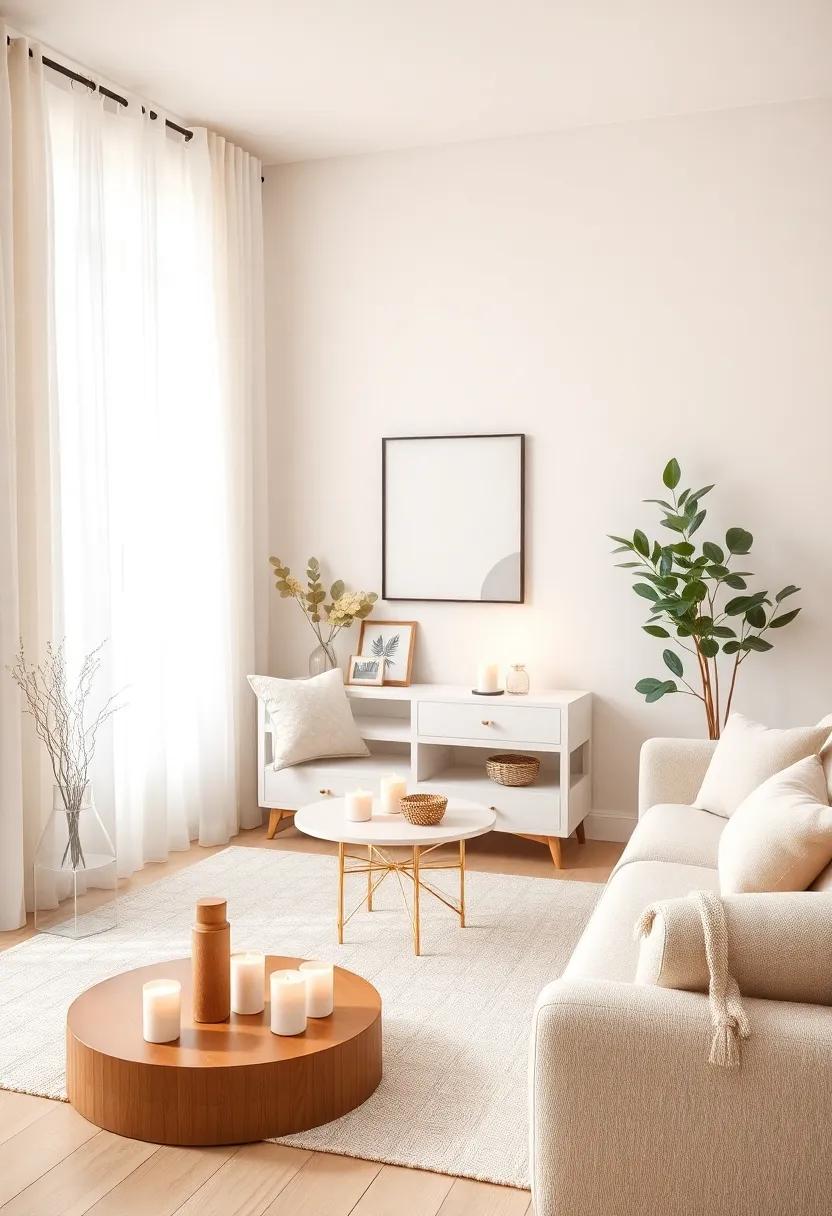
embracing a palette of cream and beige in small living spaces fosters an inviting atmosphere, promoting both relaxation and harmony. These soft hues, reminiscent of sandy beaches and warm sunlight, create a seamless flow that can make any area feel more expansive and airy. Utilizing these colors can enhance natural light, reflecting it throughout the room and eliminating any feelings of confinement. To further enhance this serene backdrop, consider incorporating textured elements such as:
- soft wool throws
- Woven baskets
- Subtle art pieces in muted tones
- Natural wood accents
When it comes to furniture choices, opt for lighter pieces that complement the cream and beige theme. Not only do lighter colors prevent visual clutter, but they also harmonize beautifully with the tranquil vibe. A coffee table with a glass top, for instance, offers an illusion of open space while showcasing decorative elements beneath. For a touch of coherence,you might consider implementing a simple table setup,such as:
| Furniture Type | Color Options | Material |
|---|---|---|
| Couch | Cream | Fabric |
| Accent Chair | Beige | wood with Cushions |
| Coffee Table | Glass | Metal Frame |
To gain further inspiration on using soft color schemes,explore additional resources at The Spruce.
creating Illusions of Space with Light Pastels in Compact Areas
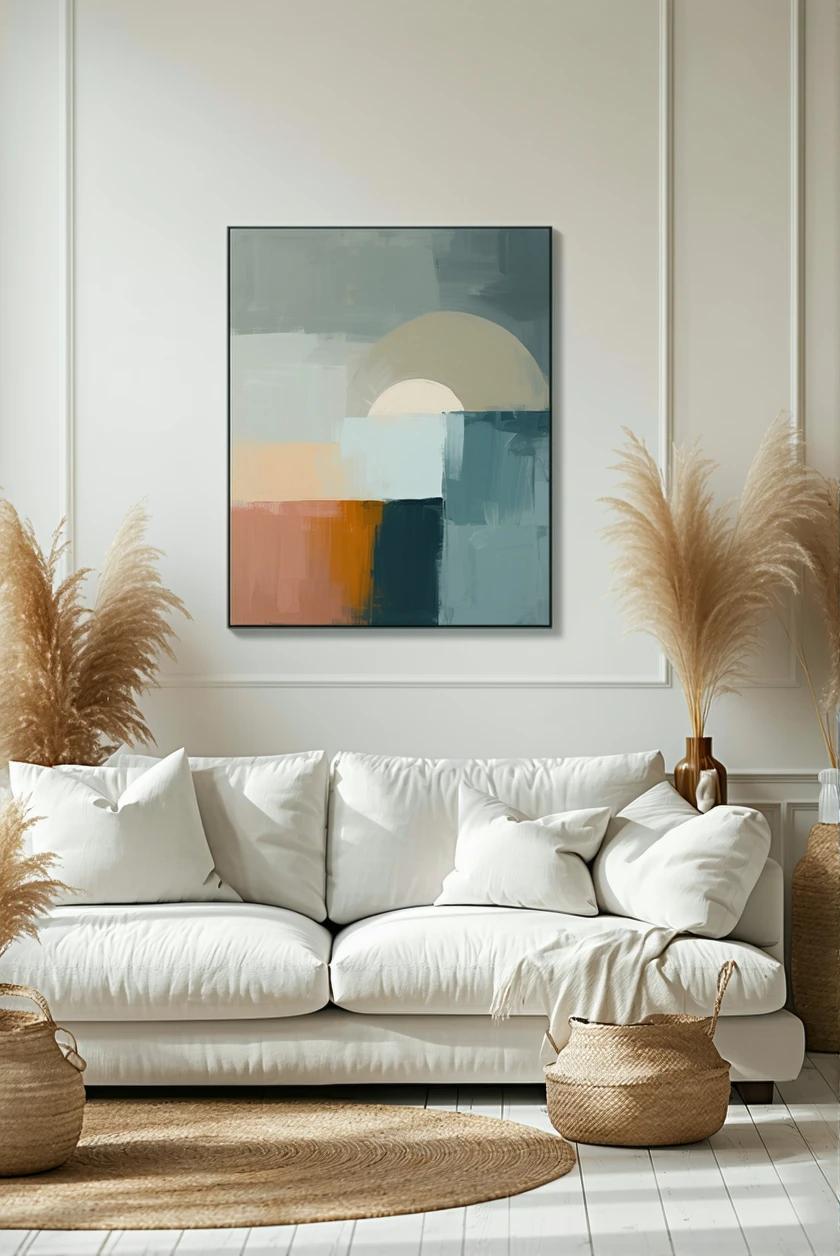
Utilizing light pastels in compact living areas can significantly enhance the sense of space, creating an airy ambiance that invites tranquility. These gentle shades, such as soft pinks, muted blues, and pale greens, work wonders in reflecting natural light, making a room feel larger and more open. When strategically applied,light pastels not only add a touch of elegance but also help to unify elements of the decor. Consider incorporating pastel accents in the furniture or wall art to maintain a cohesive design.Elements such as light-colored rugs and sheer curtains can further contribute to this effect, allowing seamless movement across the room.
To maximize the illusion of space, pay careful attention to the placement of mirrors. Mirrors reflect light and colors, effectively doubling the ambiance while creating depth in small areas. Here are some tips to implement:
- Use oversized mirrors to open up the room.
- Position mirrors across from windows for enhanced light reflection.
- Opt for furniture with reflective surfaces to augment brightness.
Additionally, you can create a harmonious look by selecting a limited color palette, which allows for greater continuity, while strategically using bolder accents in small doses—perhaps in cushions or decorative items. for more inspiration and ideas on design, check out House Beautiful.
Blending Nature and Serenity: Soft Greens for Enhanced Relaxation
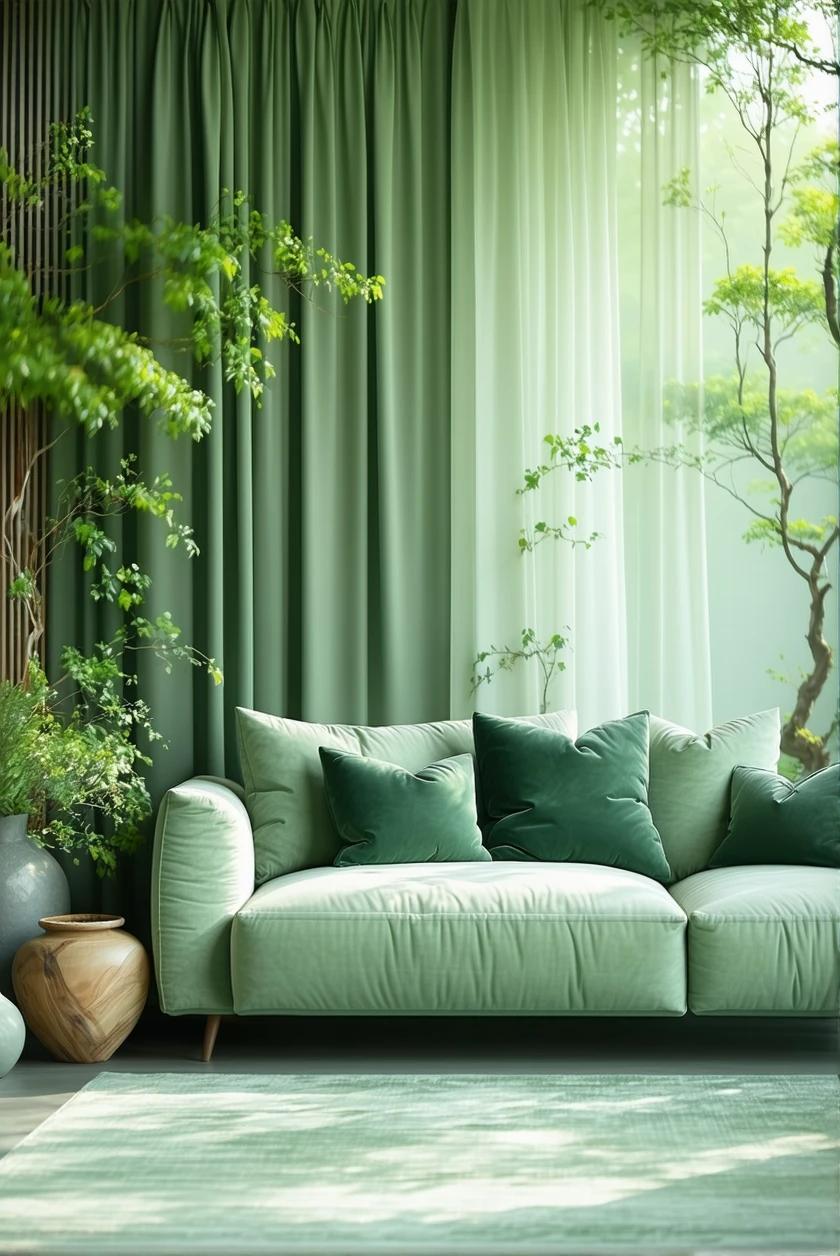
Soft green hues have the remarkable ability to evoke a sense of calm and tranquility, making them ideal for small living spaces where relaxation is paramount. Incorporating these gentle shades can transform an ordinary room into a serene escape from the hustle of daily life. Consider painting walls in muted sage or pale mint, which not only visually expand the area but also create a refreshing and harmonious atmosphere. To enhance the natural essence of these greens, you can incorporate elements such as:
- Textured Throw Pillows: Opt for cushions in varying shades of green to create layers and interest.
- Natural Materials: Use wooden or rattan furniture that complements the greens and adds warmth.
- Indoor Plants: Choose easy-to-maintain plants like succulents or ferns that emphasize the fresh theme.
Additionally, you can create a focal point with artwork featuring nature scenes or abstract pieces that incorporate greens and soft earth tones. this not only enhances visual interest but invites a sense of peaceful contemplation. A well-thought-out combination of these elements will promote an inviting vibe while maximizing space. For inspiration on the best color palettes, check out ColourLovers, which offers endless possibilities for your design journey.
| Element | Color Pairing |
|---|---|
| Wall Color | Soft Sage |
| Accent Decor | Warm Beige |
| Furniture | Natural Wood |
exploring the Warmth of Peach and Coral in Living Room Designs
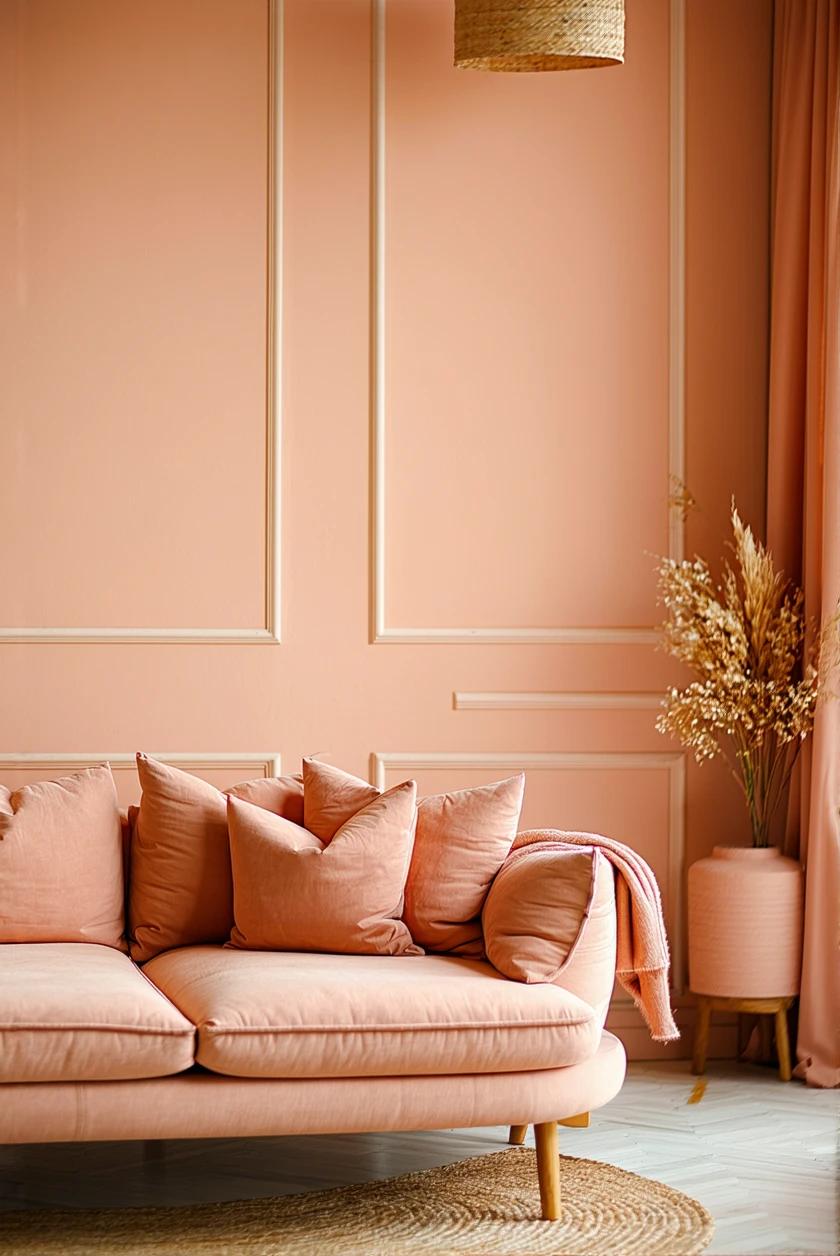
Infusing a living room with warm tones of peach and coral can transform a small space into a vibrant and welcoming retreat. These colors, reminiscent of sunrises and blooming blossoms, evoke feelings of happiness and calm, making them perfect for creating a serene environment. By incorporating soft peach or coral hues through accent walls, cushions, or decorative pieces, you can achieve a beautiful balance that brightens your space and adds depth without overwhelming it. Consider layering these shades with complementary colors such as soft beige or light gray to enhance the tranquility of your living area.
To make the best use of these warm tones,consider the following design elements:
- Focal Points: Use coral or peach in key areas such as a statement rug or artwork to capture attention.
- Textures: Incorporate various fabrics like plush throws or silk curtains in these shades to add visual interest.
- Accessories: Choose decorative items like vases or lamps in coral and peach to tie the space together.
Additionally, integrating natural light can amplify these warm tones, making the room feel more open and airy. Lightweight curtains can help filter sunlight while ensuring the colors radiate throughout the space. For more inspiration on color palettes and home decor ideas, visit Houzz.
Neutral Tones: The Art of Simplicity in Small Living spaces
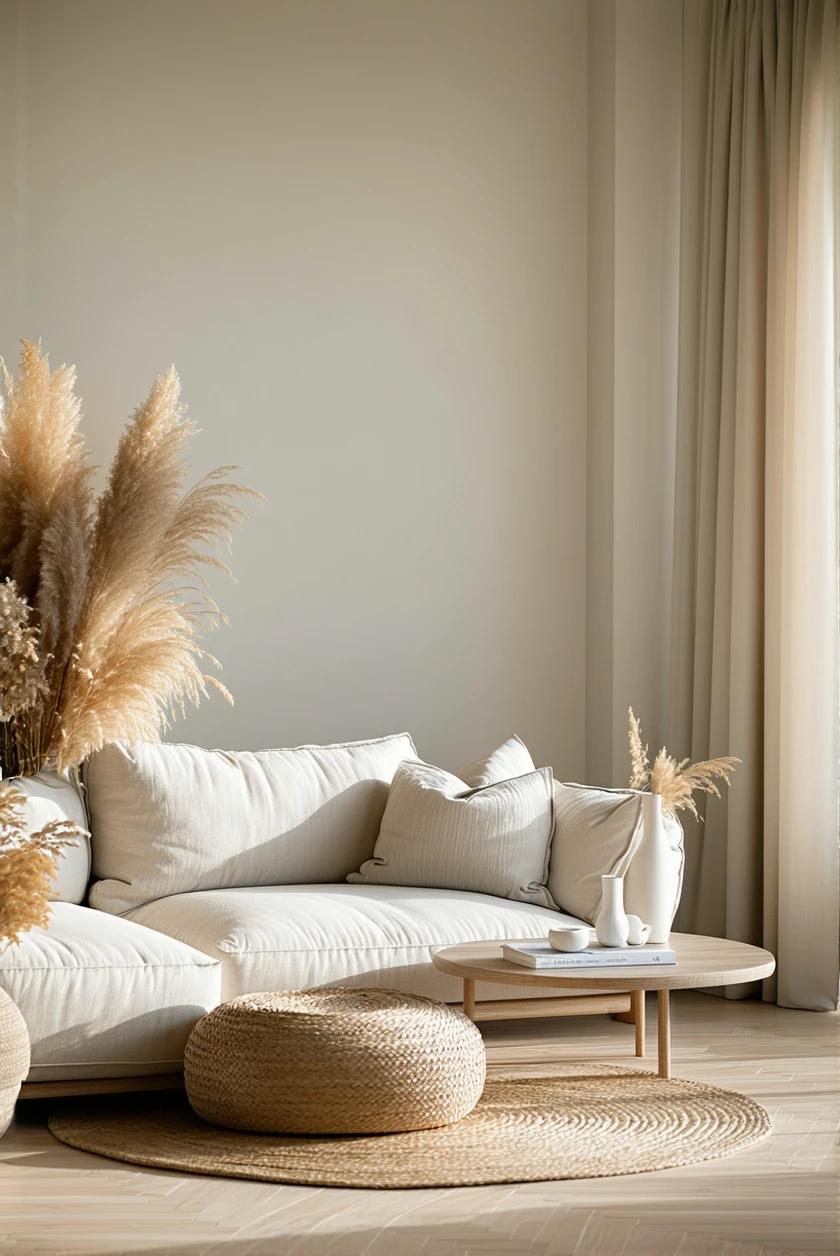
Neutral tones offer a tranquil backdrop that can make even the smallest of living rooms feel open and serene. By choosing shades of beige,soft gray,or muted whites,you create an airy ambiance that enhances natural light and emphasizes space. To achieve this aesthetic, consider incorporating textures and layers into your design. Use natural fabrics, such as linen or cotton, and mix in materials like wood or stone for added depth. A simple color palette allows you to focus on the form and function of your furniture, creating an uncluttered environment that promotes relaxation. Incorporate a few vibrant accents through accessories like cushions or artwork, but keep these elements subtle to maintain the overall serene vibe.
To effectively embrace a neutral color scheme in your living area, it’s importent to consider your lighting.The way natural light enters your space can dramatically change the appearance of colors, especially softer tones. Utilize light fixtures that can create warmth or coolness, mimicking the daylight variations. Here’s a basic guide to how neutral colors can react with light:
| Time of Day | Lighting Effect | Color Reaction |
|---|---|---|
| Morning | Bright & Warm | Enhances warmth in beige and taupe |
| Afternoon | Neutral Light | Promotes a cool ambiance in grays |
| Evening | Soft & Warm | Creates cozy notions in whites |
Choosing a neutral palette doesn’t mean sacrificing personality; it invites creativity and expression through thoughtful furniture placement and accessory choices. For further inspiration,explore resources on interior design at Houzz.
Utilizing Soft Gray for a modern Yet Cozy Atmosphere
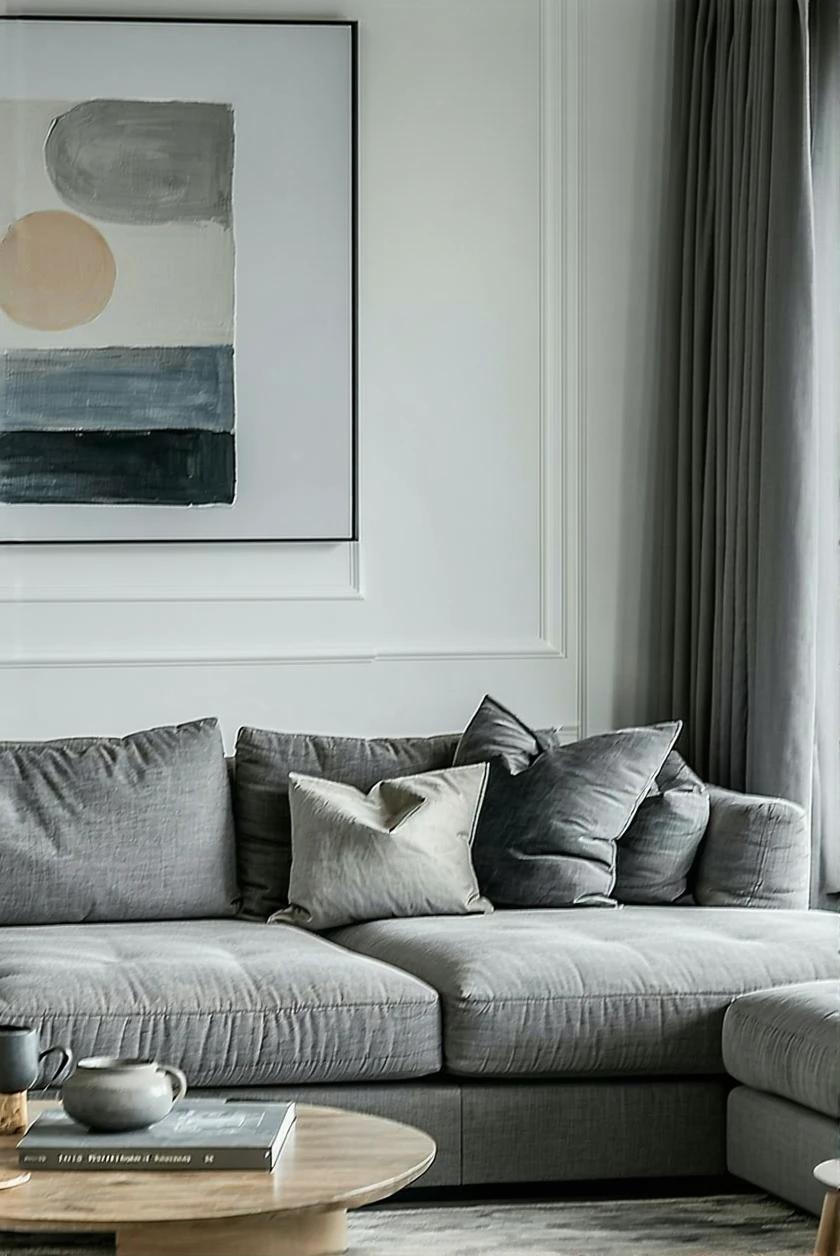
Soft gray serves as a versatile backdrop that beautifully balances modern aesthetics with warmth. When incorporated into small living spaces, this gentle hue can create an illusion of expanded dimensions while imparting a calming vibe. By layering textures and utilizing varied shades of gray, you can enhance the visual interest of your room without compromising on comfort. Consider the following elements to maximize the cozy appeal:
- Textured Fabrics: Incorporate soft throws and plush cushions in varied gray tones to invite touch and warmth.
- Natural Elements: Use wooden accents or plants to break the monochrome and introduce organic warmth, tying the modern with the cozy.
- Lighting: Opt for warm lighting solutions that can soften the overall ambiance, transforming the gray into a tranquil retreat.
To further enhance the soft gray theme, consider creating a harmonious color palette that complements this tranquil base. Light pastels or deep jewel tones can provide striking contrast without overwhelming the senses, and these can be applied in accents such as artwork or decorative items.Blending colors effectively can breathe life into your space, making it both inviting and stylish. Here’s a simple guide to contrasting colors:
| Base Color | Contrasting Accent Colors |
|---|---|
| Soft Gray | Dusty pink, Sage Green |
| Charcoal Gray | Mustard Yellow, Navy blue |
For more inspiration on using soft colors in interior design, check out Apartment therapy.
Lavender Inspirations: A Refreshing Take on Living Room Decor
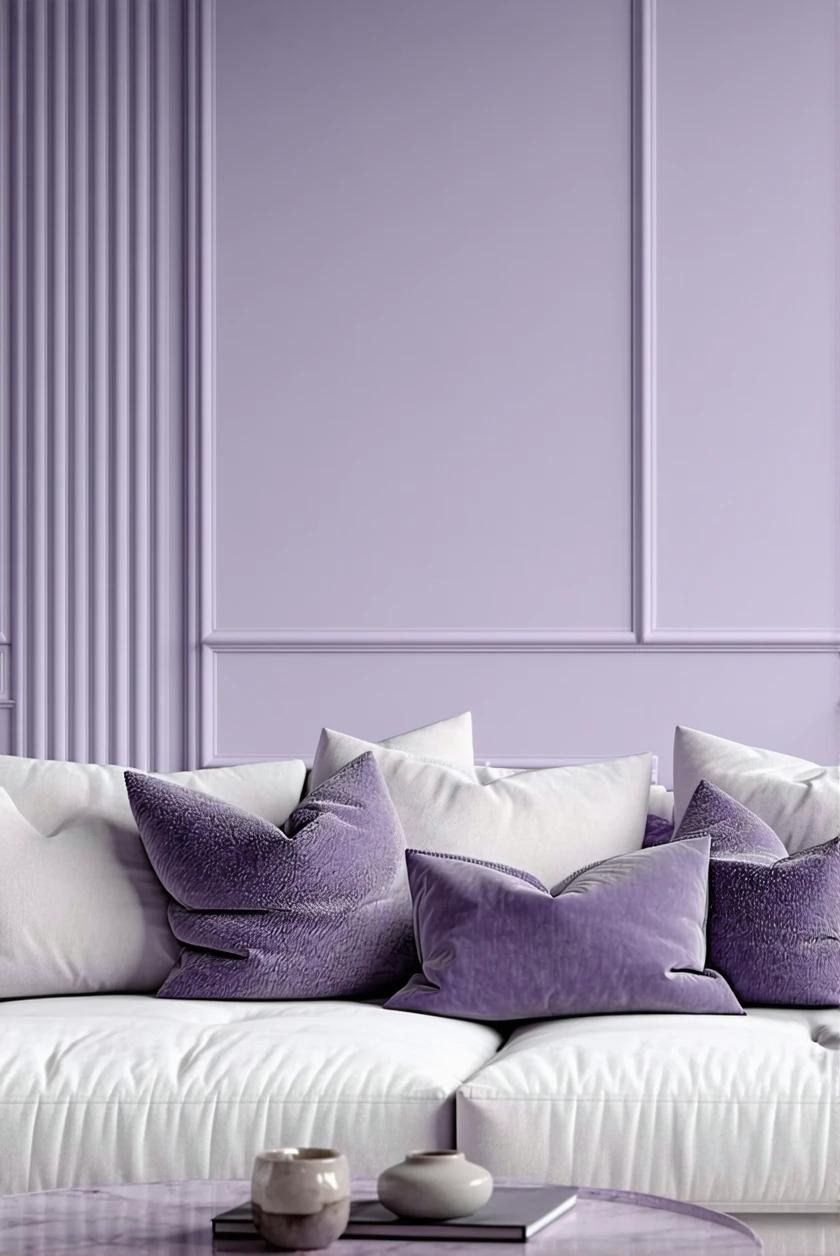
Incorporating lavender hues into your living room decor offers a unique way to infuse serenity and calmness into a small space. The soft, muted tones of lavender create an inviting atmosphere, making the room feel more spacious and tranquil. You can achieve this aesthetic through various elements, such as:
- Lavender Throw Pillows: Add plush pillows in lavender fabric to your sofa for a pop of color that complements neutral shades.
- Wall art: Opt for abstract pieces featuring lavender tones to create a focal point without overwhelming the space.
- Rugs: A soft lavender area rug can ground the room while maintaining a light and airy feel.
For a cohesive look,consider pairing lavender with other soft colors like mint green or pale yellow. This combination will enhance the calming effect while maintaining a stylish vibe. Additionally, introducing some natural elements can further elevate the decor. Think about the following:
- Indoor Plants: Incorporating plants can introduce freshness and liveliness, creating a vibrant contrast with the lavender shades.
- Light Fixtures: Choose lamps or fixtures with a lavender hue or light purple accents to tie the decor together.
- Curtains: Light, sheer lavender curtains can provide privacy while allowing natural light to permeate the space.
For more ideas on using soft color schemes in your home, check out Apartment Therapy.
Combining Texture and Color: Soft Fabrics in Small Spaces
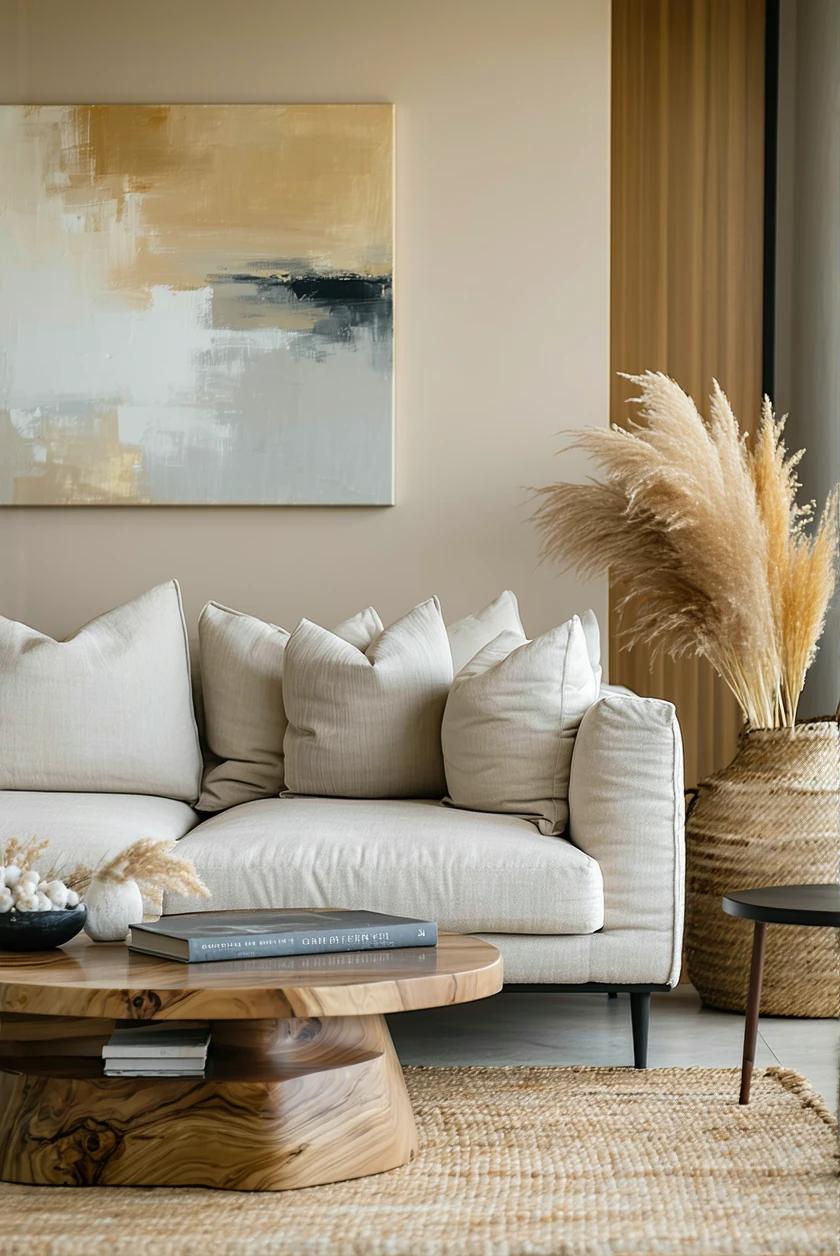
In small spaces, the choice of fabric can make a powerful impact on the overall aesthetic. Soft fabrics such as cotton, linen, and velvet can create an inviting atmosphere while also adding depth and warmth to your environment. By opting for lighter shades in these materials, you can effortlessly enhance the sense of openness in a room. Consider incorporating these soft textures through elements like:
- Cushions: Choose oversized cushions in soft pastels or muted tones to add a touch of comfort.
- Throws: A lightweight, textured throw can be draped over a chair or sofa, providing both style and coziness.
- Rugs: A plush, neutral-colored rug can anchor your space while emphasizing the softness of your chosen palette.
Color also plays a critical role when pairing with these fabrics. soft hues, such as pale blues, blush pinks, or gentle greys, not only evoke tranquility but also blend harmoniously with various patterns and textures. Implementing these colors can easily be achieved through:
- Accent Walls: A softly painted wall can serve as a backdrop for soft-fabric furnishings.
- Art and Decor: Use pieces that incorporate these gentle shades to tie the room together.
- Accessories: Opt for ceramic,glass,or wood elements in complementary colors that enrich the overall design.
Combining texture and color in your small space helps foster a serene atmosphere, effortlessly enhancing the comfort of your living room. For more tips on interior design,explore Houzz for inspiration.
The Influence of Soft White on Light and Space Perception
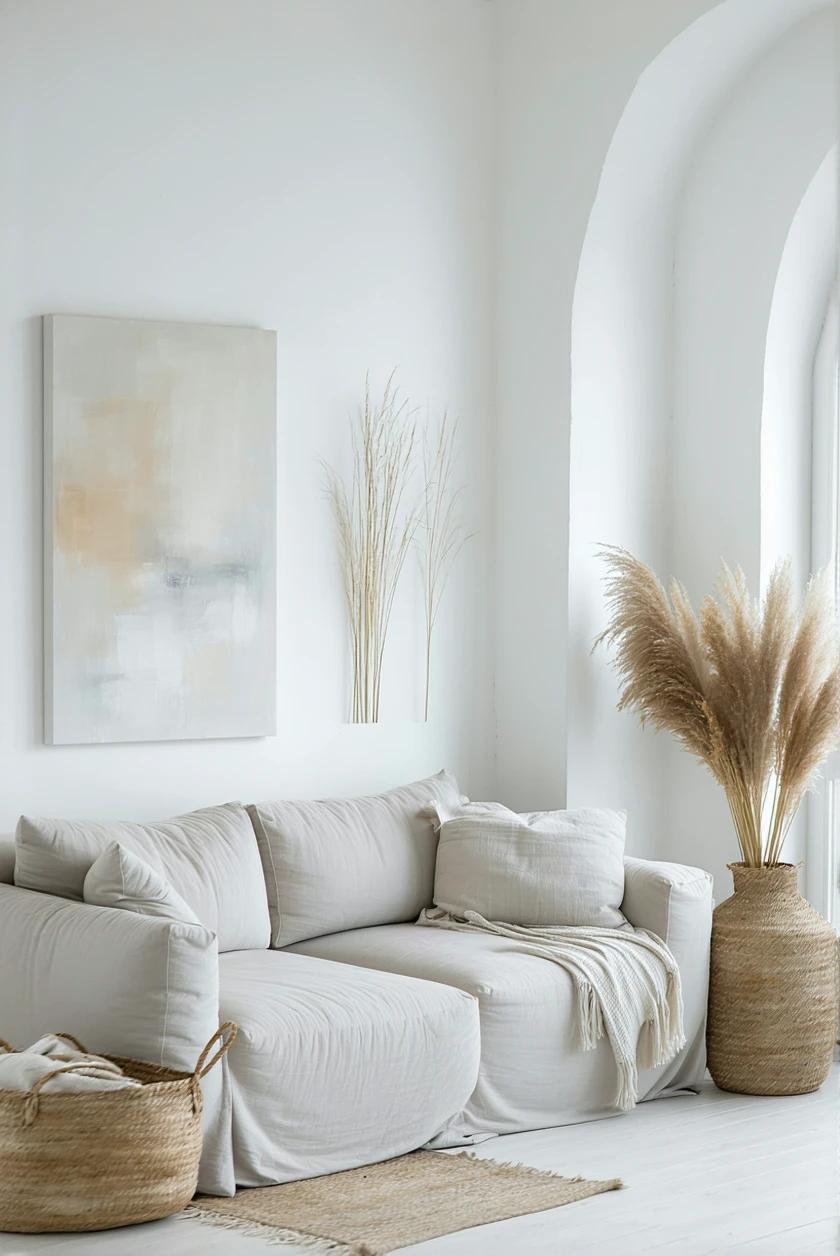
Soft white acts as a magical element in interior design, especially in small living spaces. This shade reflects light beautifully, transforming the perception of space by creating an illusion of airiness and openness. When applied to walls and ceilings, soft white minimizes shadows and enhances the overall brightness, which is crucial for compact areas that might otherwise feel cramped. By using this color, homeowners can elevate their environments, achieving a refreshing and inviting ambiance that feels larger than life. Whether accentuating architectural features or serving as a backdrop for furniture and décor, soft white plays a pivotal role in balancing and harmonizing visual dynamics.
Incorporating soft white into your living room not only enhances light but also contributes to a sense of serenity and calmness.This neutral hue complements various design styles, making it versatile for any aesthetic preference. Here are some benefits of utilizing soft white in small spaces:
- Light Reflection: Amplifies natural and artificial light.
- Versatility: Pairs well with any color palette.
- Timelessness: Offers a classic backdrop for evolving styles.
- Cozy Atmosphere: Creates a welcoming environment.
For further inspiration on utilizing soft colors effectively, you can explore resources on House Beautiful.
Sunny Yellows: Infusing Cheerfulness into Cozy Corners
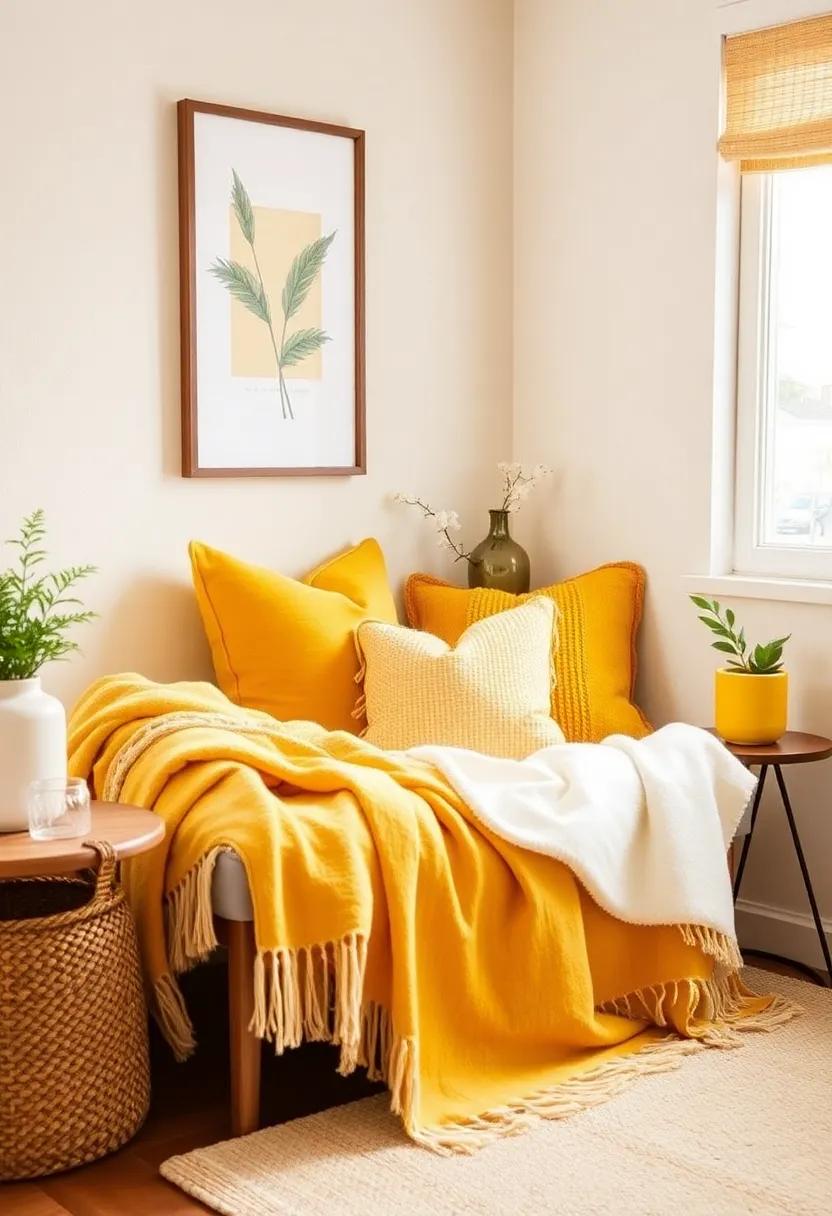
Incorporating vibrant hues like yellow into small spaces can uplift the atmosphere while maintaining a sense of coziness. Accent pillows and throws in sunny shades can easily transform a neutral palette,creating a welcoming environment. Consider layering textures through a mix of materials—soft cotton blankets paired with cozy knits add warmth and encourage relaxation. To enhance the effect, opt for decorative items such as vases or wall art that harmonize with golden undertones, promoting a cheerfulness that beckons you to curl up with a good book or cup of tea.
To ensure that your cozy corner exudes the right amount of brightness without overwhelming the senses, utilize sunny yellows in moderation. A well-placed feature wall painted in a soft buttercream can serve as a backdrop, allowing lighter accessories to pop without competing for attention.Consider adding greenery to this setup; plants in bright pots can complement the sunny notes while bringing life into the space. A well-designed layout might include a small bistro table for snacks and drinks, inviting you to take a moment for yourself or share a laugh with a friend.
Incorporating Earthy Tones for Comfort and Balance
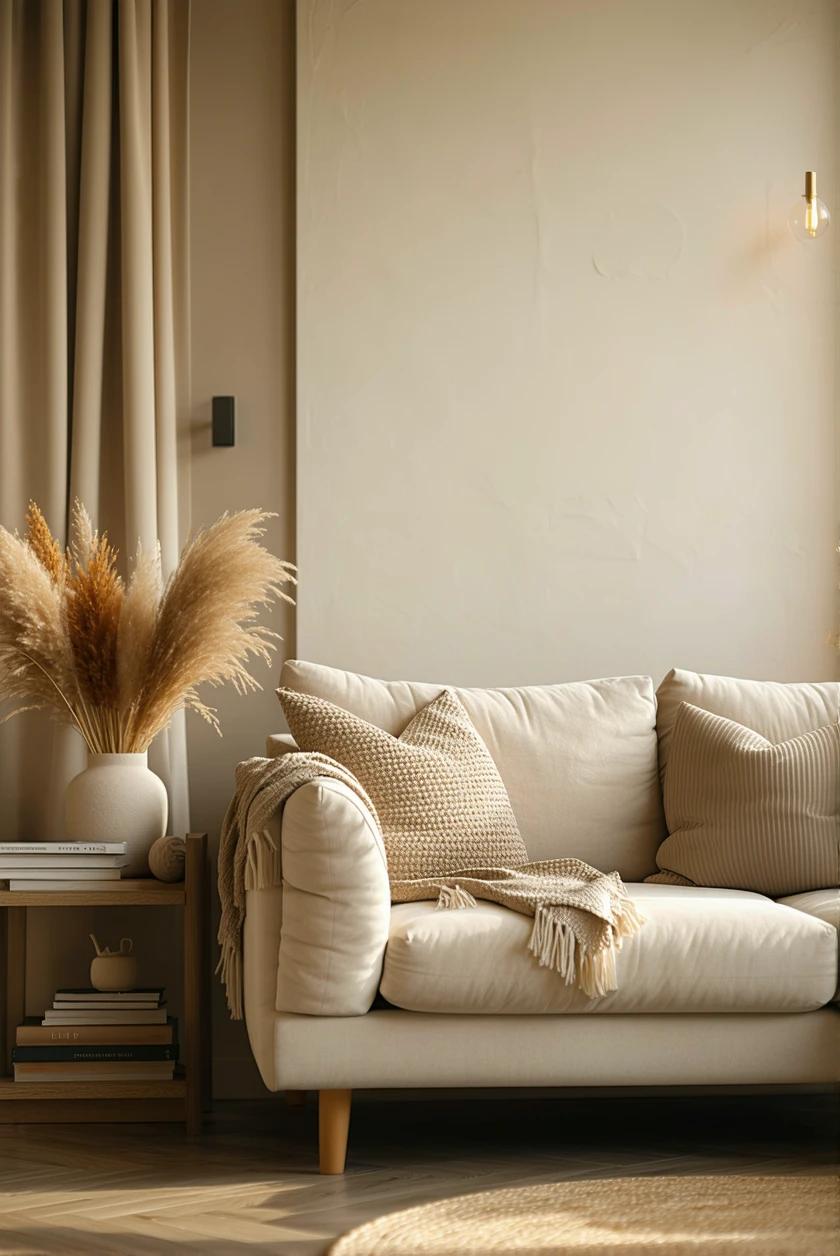
Creating a sanctuary in small living spaces often involves the careful selection of colors that promote a sense of calm and stability. Earthy tones, such as rich browns, gentle greens, and soft terracottas, can define the atmosphere of a room, offering a grounding effect while fostering a comforting ambiance.These natural hues, reminiscent of the outdoors, can be seamlessly integrated into your interior design through various elements, including paint, textiles, and decor. When choosing your palette, consider a mix of nature-inspired shades to evoke feelings of tranquility and warmth:
- Warm Beige: Acts as a neutral backdrop that enhances other colors.
- Soft Olive Green: Brings a fresh and rejuvenating feel.
- Rustic Terracotta: Infuses the space with a cozy, inviting vibe.
- Dusty Earthy Browns: Provides depth and a connection to nature.
Incorporating these tones can also highlight textures and shapes, allowing for a harmonious blend of comfort and style.Layered textiles in these colors, such as cushions, throws, and curtains, not only add warmth but also create visual interest without overwhelming the senses. Accessories, including natural wood furniture or ceramics, can further enhance the earthy aesthetic, establishing a cohesive look that invites relaxation. To truly maximize the comfort of your small space, consider these basic principles:
| Element | Effect |
|---|---|
| Textiles | Softens the space, adds warmth |
| Furniture | Defines areas, provides function |
| Lighting | Sets the mood, enhances color |
By thoughtfully integrating these earthy tones into your design, you can truly transform your living room into a serene retreat. For additional insights on color psychology and interior design, visit Monster Crafter.
Subtle Patterns: Enhancing Serenity with Soft Motifs
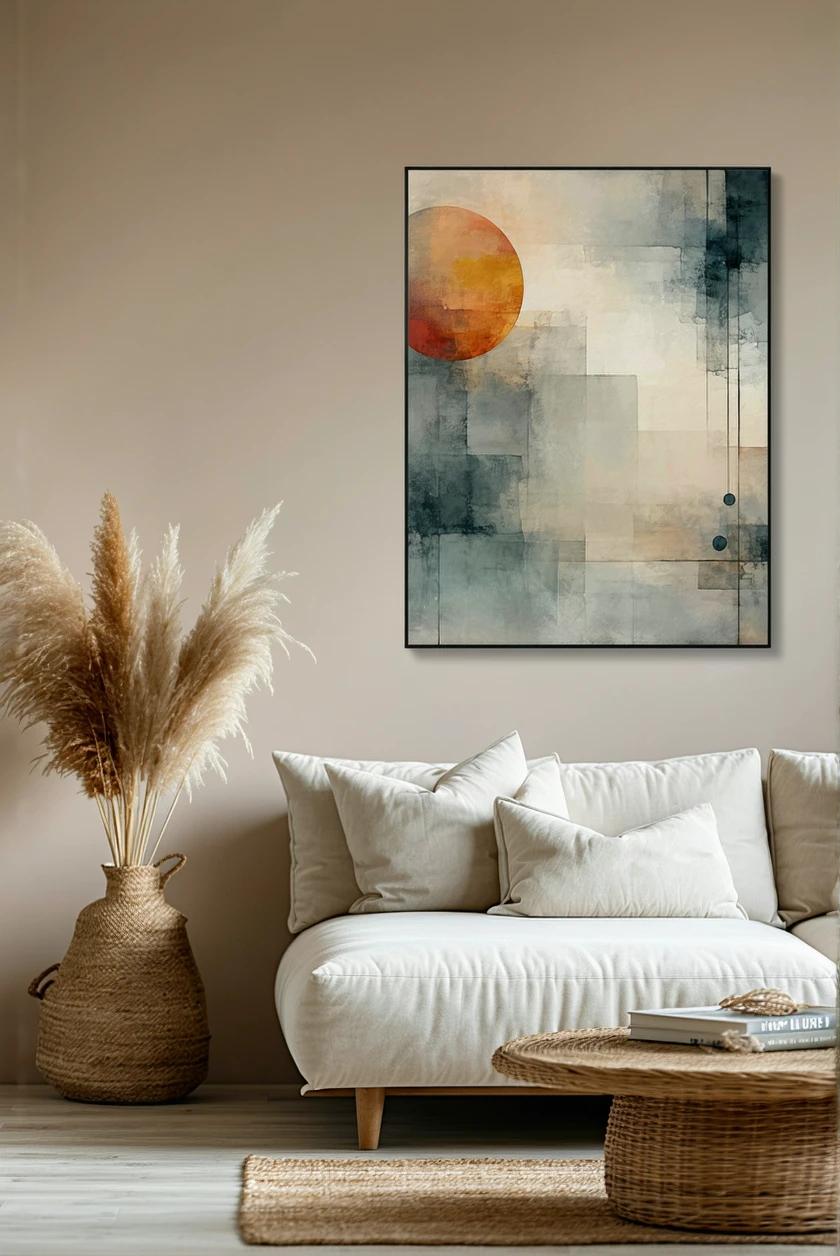
Incorporating soft motifs into your small living space can truly enhance it’s serenity, offering a soothing escape from the chaos of daily life. Textiles, wall art, and decorative elements featuring delicate patterns can create a cohesive feel that invites relaxation. Consider elements such as:
- Geometric patterns with rounded edges
- Floral prints with muted colors
- Subtle abstract designs that evoke tranquility
By layering these gentle motifs throughout your space, you’ll develop a harmonious environment that feels expansive yet intimate.utilize items like patterned throw pillows or wall hangings to draw the eye upward, creating the illusion of height and space. Furthermore, the placement of textured items, such as woven baskets or soft rugs, adds warmth and comfort, making your living room a serene retreat. For inspiration on incorporating these elements, you might explore resources like Houzz.
Accent Walls with Gentle Hues: Focal Points for Relaxation
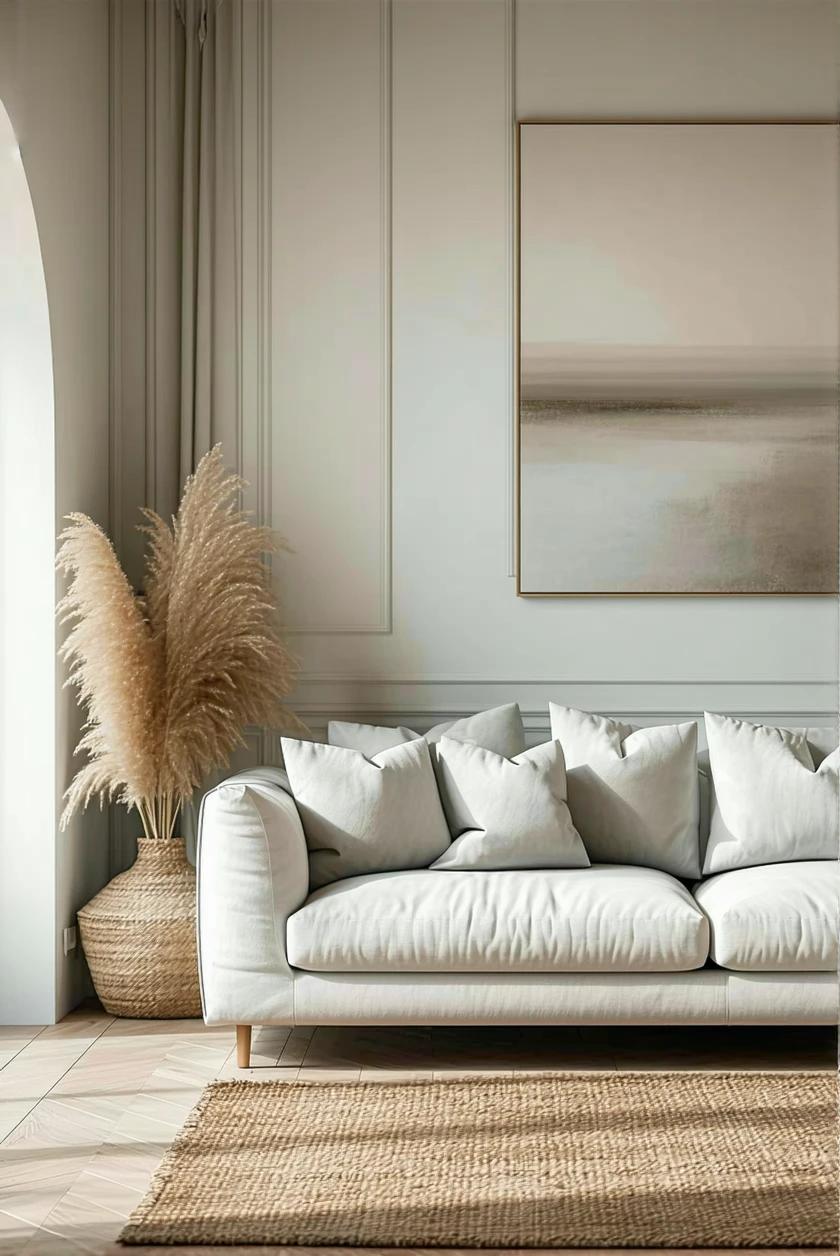
In the quest for a tranquil living space, accent walls adorned with gentle hues present an inviting opportunity to create striking focal points that enhance relaxation. Soft shades like pale blues, muted greens, or delicate lavender can transform a single wall into an oasis of calm. These colors not only capture light beautifully but also evoke a sense of peace, encouraging you to unwind after a long day. Consider using these gentle tones to draw attention to architectural features or beloved artwork, making them the heart of the room.
To further amplify the soothing ambiance, you can complement the accent wall with harmonious decor elements. Here are some suggestions:
- Incorporate natural textures like wood or rattan to add warmth.
- Add plants that feature lush,soft greens to enhance the calming effect.
- Utilize lighting that casts a warm glow to soften the overall atmosphere.
- Choose minimalist furniture with rounded edges to maintain flow and comfort.
Pairing these strategies will elevate your living room into a serene retreat, focusing attention subtly on the beauty of your chosen accent wall. For more inspiration on interior design incorporating soft colors, visit Architectural Digest.
Mirrors and Light: Amplifying Soft Colors in Small living Rooms
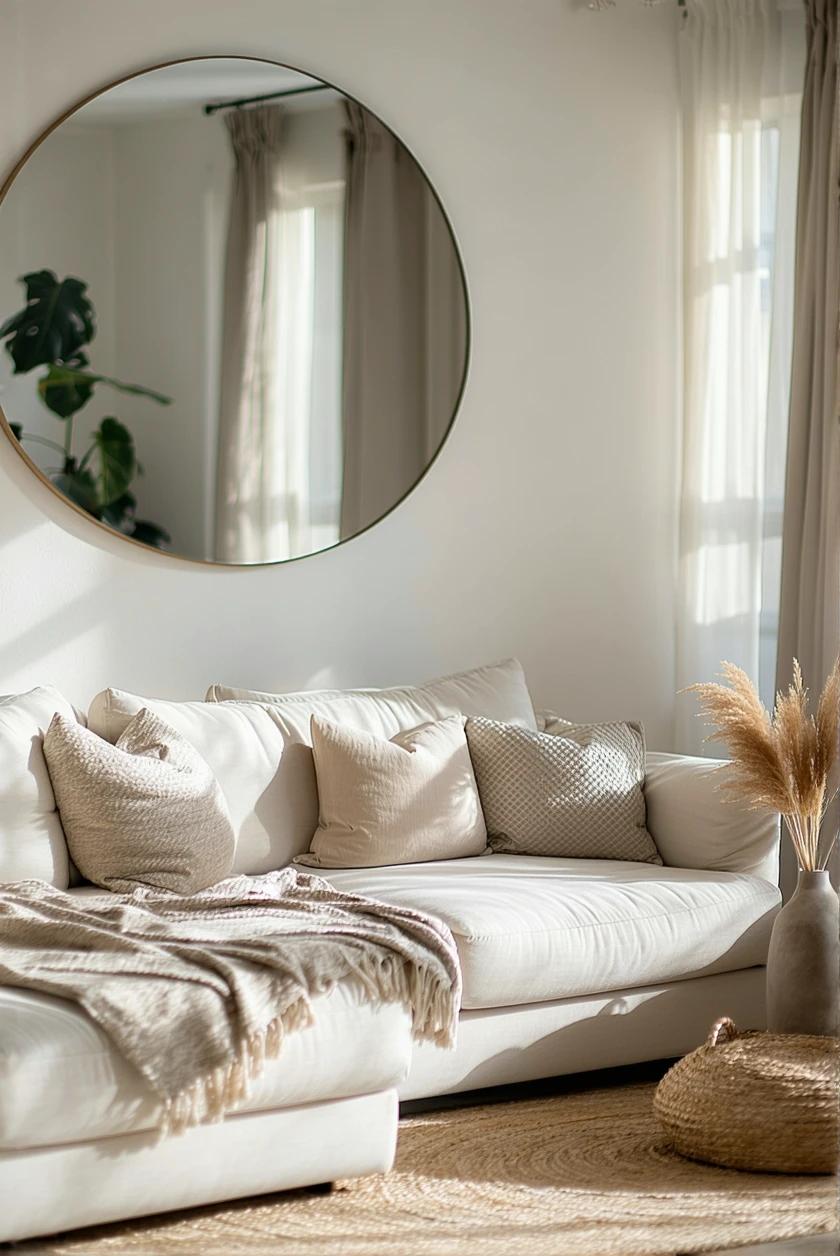
In the quest to create a serene atmosphere within small living rooms, mirrors serve as invaluable allies, reflecting and refracting light to amplify the gentle hues of your chosen palette.When strategically placed, mirrors can visually expand the space, adding depth and dimension while enhancing the calming effect of soft colors like pastel blues, pale greens, and creamy whites. Consider the following tips for maximally leveraging mirrors in your design:
- position mirrors opposite windows to capture and disperse natural light.
- Choose decorative mirrors with soft curves to complement a gentle color scheme.
- Utilize a gallery wall of small mirrors to create an intriguing focal point.
In addition to mirrors, the choice of lighting plays a crucial role in accentuating soft tones. Soft, warm light sources can make a small room feel inviting and spacious. A combination of ambient, task, and accent lighting can help to breathe life into even the coziest corners. When selecting fixtures,aim for those with a minimalist design that won’t overpower the tranquility of your decor. Below is a simple table illustrating various lighting options and their impacts:
| Lighting Type | Effect |
|---|---|
| Ambient Lighting | provides overall illumination, enhancing the room’s openness. |
| Task Lighting | Focuses light on specific areas, useful for reading or working. |
| Accent Lighting | Highlights decor elements, creating a layered and dynamic atmosphere. |
by thoughtfully combining mirrors with the right lighting, you can cultivate a cozy sanctuary within your small living room—a space that exudes peace and comfort. Explore more about maximizing light and space at Houzz.
Layering Soft Lighting for an Inviting Ambiance
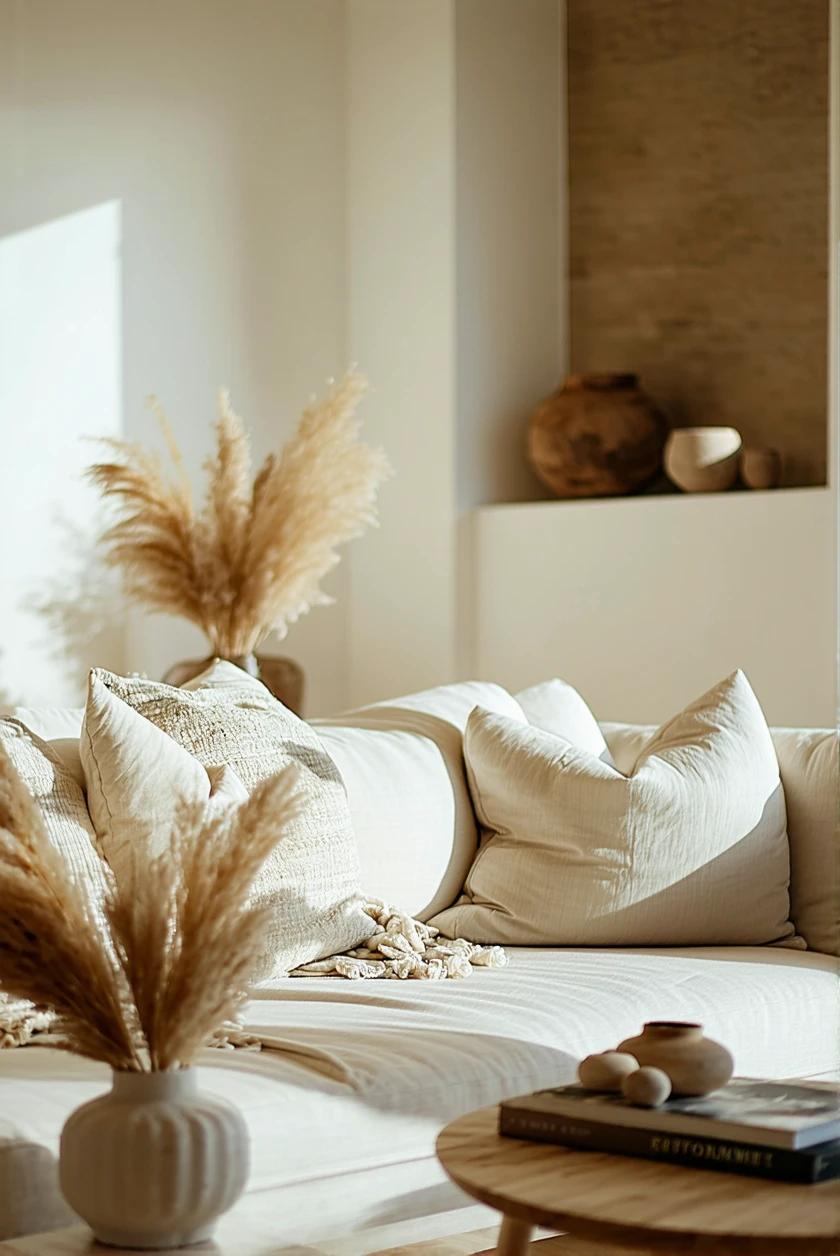
Soft lighting can be the secret ingredient for transforming a small living space into a cozy retreat.to create this inviting ambiance, consider using a combination of diffrent light sources at various heights. This layering technique allows you to eliminate harsh shadows and surface glare while contributing to a sense of tranquility. Incorporate table lamps, floor lamps, and wall sconces in softly diffused options to build a warm glow that envelops the room. Additionally, you can enhance the atmosphere with strategically placed LED strip lights behind furniture or within architectural features, creating a soft halo effect that visually expands your space.
It’s essential to think about light temperature as well, opting for warm white bulbs rather than stark white ones. When shopping for bulbs,look for those rated between 2700K and 3000K,which will emit a soothing glow reminiscent of candlelight. For added flair, use dimmer switches to adjust the brightness according to different occasions, allowing for an adaptable environment. Consider adding a few decorative lanterns or fairy lights to enhance the coziness when you entertain guests. As the perfect finishing touch,a well-placed mirror can reflect this soft lighting,further amplifying the sense of serenity and charm within your small living room space. For more tips on home lighting, visit Houzz.
Creating a Cohesive Look: Matching Furniture and Color Schemes
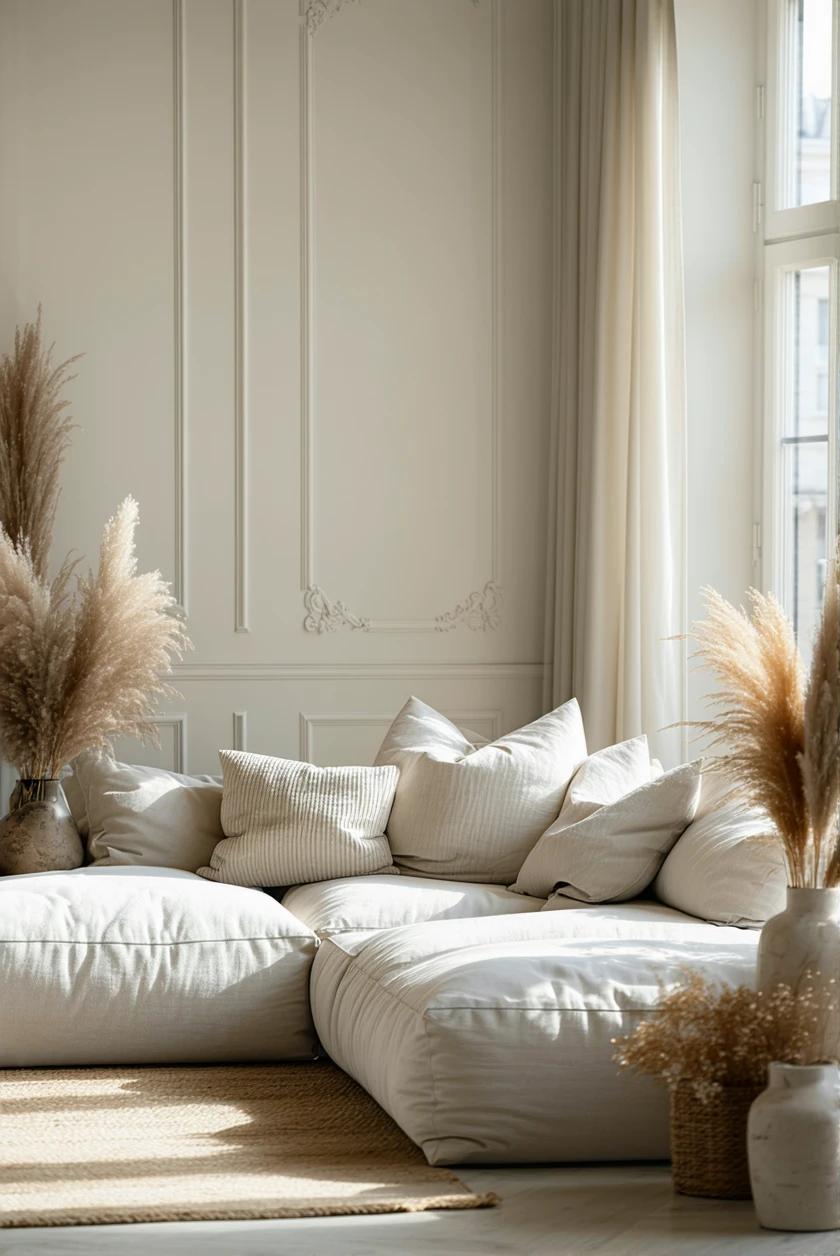
To achieve a serene and inviting atmosphere in your small living space,focusing on the harmony between furniture and color schemes is essential. Start by selecting pieces that not only complement each other in style but also resonate with the soft color palette you’ve chosen. Light wood finishes, soft fabrics, and minimalist designs can work wonders in a compact area. Prioritize furniture that serves dual purposes—think ottomans that double as storage or coffee tables that can transform into dining options. This approach allows you to maintain a clean, uncluttered look while still embracing practicality.
When curating your color scheme, opt for pastel shades or muted tones that promote tranquility. Colors such as soft blues,gentle greens,and warm neutrals can create a cohesive look that seems expansive rather than constrictive. Consider creating a visual balance by distributing these colors evenly across your furniture and decor.For example, if your sofa is a calm seafoam green, pair it with throw pillows in a similar hue or soft beige to enhance the flow. The aim is to create a seamless transition throughout the room,allowing each element to enhance the other without overwhelming the senses. For more tips on color coordination, check out Houzz.
Accessorizing Thoughtfully: Soft Color Accents that Inspire
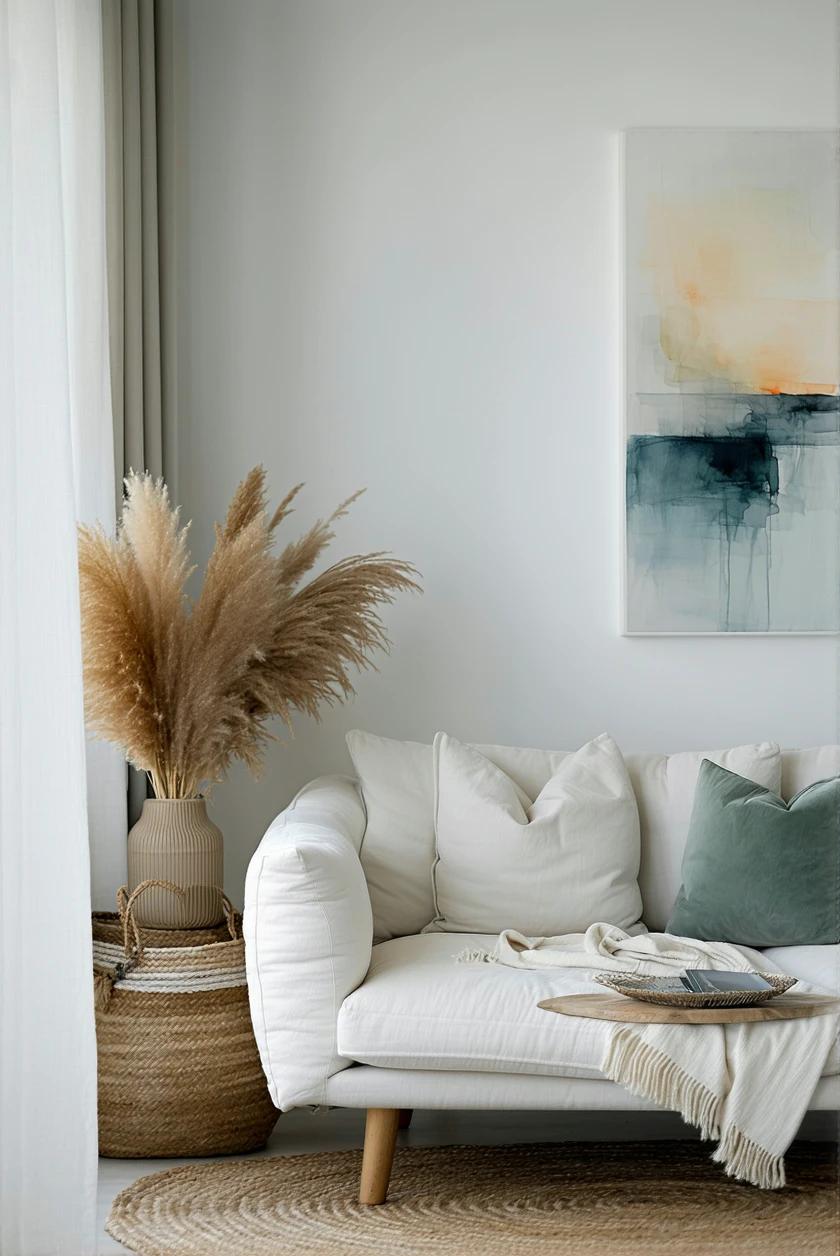
In the quest to create a tranquil living space, incorporating soft color accents can make a important impact. think of muted shades that evoke calmness, such as pastel blues, gentle greens, and warm beiges. These colors not only make the room feel larger but also add an inviting element. You can effortlessly integrate these tones through various accessories, enhancing the overall ambiance. Consider the following options:
- Throw Pillows: Select cushions in soft fabrics and colors that complement your main palette.
- artwork: Choose pieces that incorporate your selected hues for a cohesive look.
- Rugs: A light, airy rug can ground the space while keeping it feeling open.
- Curtains: Opt for sheer materials in soft colors to allow natural light to soften the room.
Layering these accents creates a holistic approach to decor, allowing your living room to exude serenity.For instance, if you use a pale blue throw on a cream couch, pair it with art that features both colors for a unified look.Consider accenting one wall with a soft pastel hue, complemented by plants or accessories in earthy tones to evoke freshness. Here is a simple table showcasing ideas for soft color pairings:
| Accent Color | Complementary Colors |
|---|---|
| Pale Pink | Light Gray, White |
| Soft Mint | Cream, Gold |
| Lavender | Beige, Light Blue |
Each combination invites a sense of peace and can significantly elevate the mood of your small space. Explore more inspirations on Apartment Therapy to discover how to harmonize these elements for an ideal atmosphere.
Personal Touches with Soulful Artwork in Soft Shades
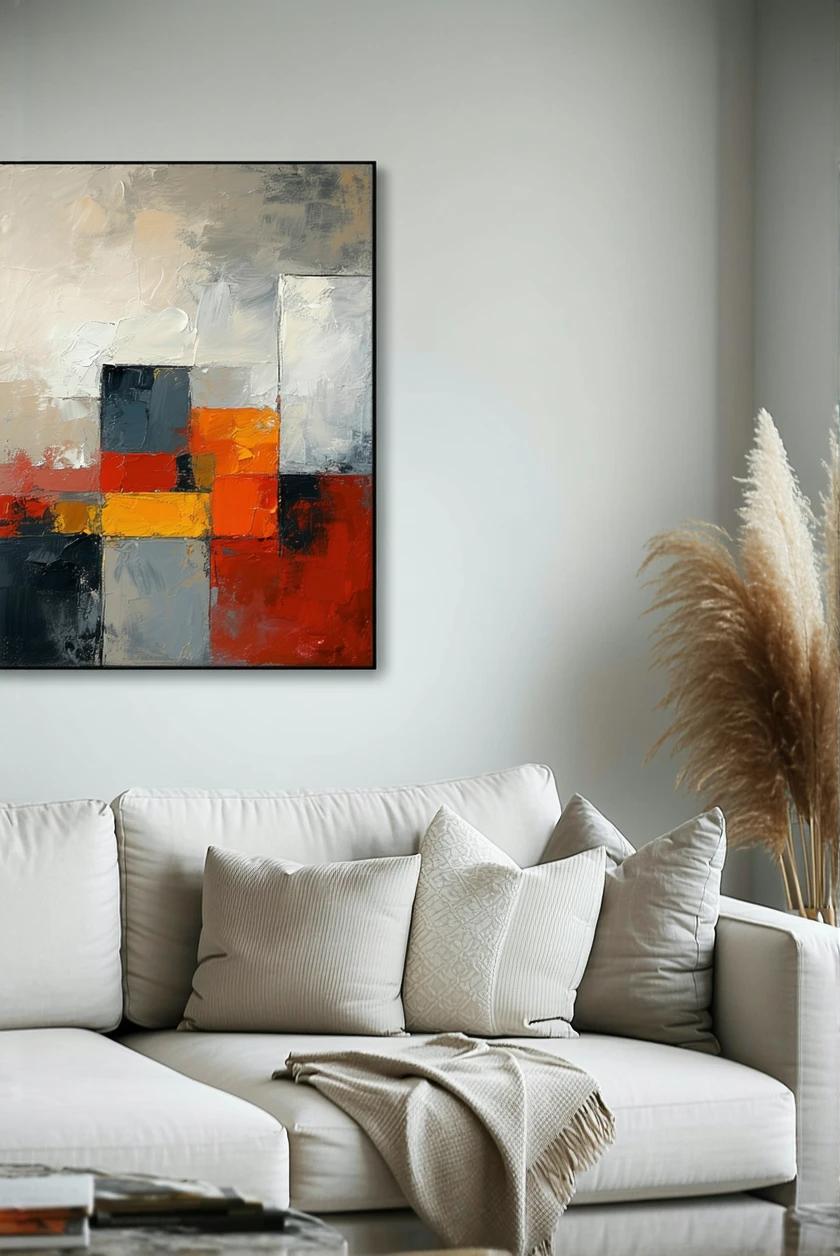
Additionally, creating a dedicated wall space for a mini gallery can add dimension to the room. Soft shades should dominate the background, enhancing both the artworks and the overall serene vibe. Incorporate frames that match the color scheme,emphasizing the artwork without overwhelming it. To take your cozy space a step further, pair your artwork with complementary decor elements, such as plush cushions or soft throws in similar shades. Consider exploring curated collections from artists or designers who specialize in creating serene aesthetic pieces that embody soft colors on platforms like Artfinder. With mindful selections, your living space can become a personalized sanctuary of art and calmness.
Inviting the Outdoors Inside: Soft Color Schemes and Greenery
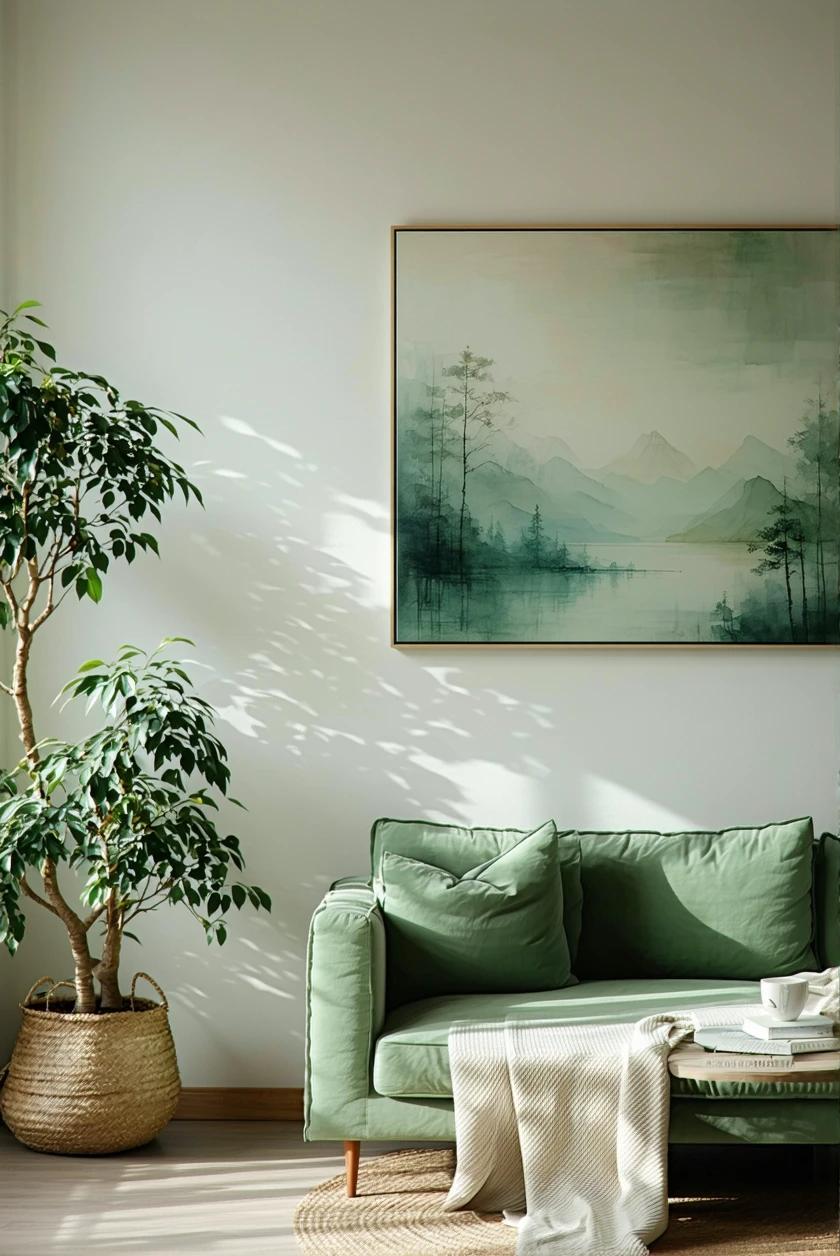
Bringing the serenity of nature indoors begins with a thoughtful selection of soft color palettes that evoke a sense of calm. Delicate hues such as muted blues,soft greens,and gentle beiges can transform a small living space into a tranquil retreat. These colors not only make the area feel larger but also create a harmonious backdrop for the life that unfolds within it. To enhance this ambiance, consider incorporating various textures to create depth, such as linen cushions, soft wool throws, and smooth wooden surfaces. Layering these elements can further elevate the soothing atmosphere.
To truly breathe life into your indoor oasis, integrating greenery can amplify the tranquil effect of your chosen color scheme. Don’t hesitate to experiment with an assortment of indoor plants, as they bring both color and vitality to your space. Opt for options like:
- Snake Plants: their striking leaves require minimal care.
- Pothos: This trailing plant adds a lush effect, perfect for shelves or hanging planters.
- Peace Lilies: Known for their elegant white blooms and air-purifying qualities.
The right combination of soft colors and greenery can create a cohesive environment that not only feels inviting but also rejuvenates the spirit.For additional insights on indoor plants, visit BHG for inspiration and tips.
Key Takeaways
transforming small spaces into serene sanctuaries is an art that begins with the careful selection of color. Soft color schemes not only have the power to expand visual boundaries but also cultivate an atmosphere of tranquility and balance. As you embark on your journey to revamp your living room, remember that every hue you choose serves as a brushstroke on the canvas of your home. By embracing gentle pastels, muted tones, and harmonious palettes, you can create a haven that invites relaxation and mindfulness. So, take a moment to breathe, envision, and let your small space become a reflection of serenity—where every corner whispers comfort, and every shade contributes to the soothing narrative of your living space. embrace the transformative power of color and watch as your home flourishes with calm elegance, one subtle shade at a time.
As an Amazon Associate I earn from qualifying purchases.

